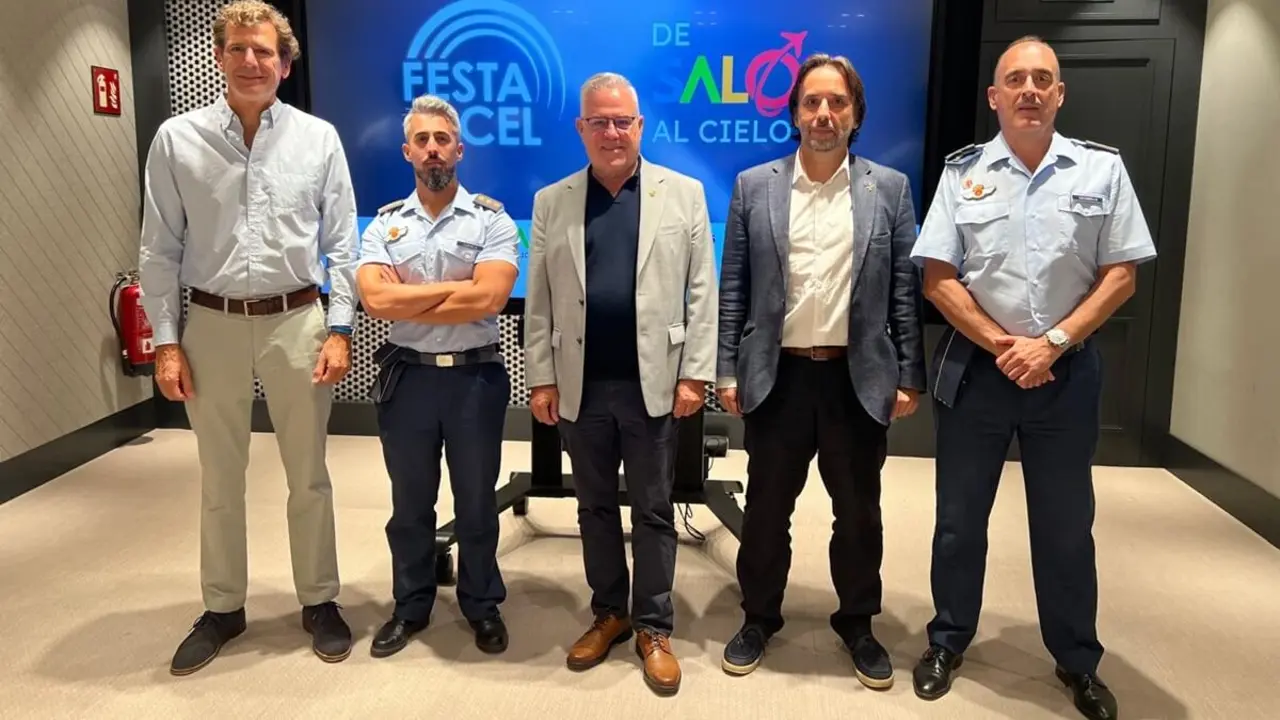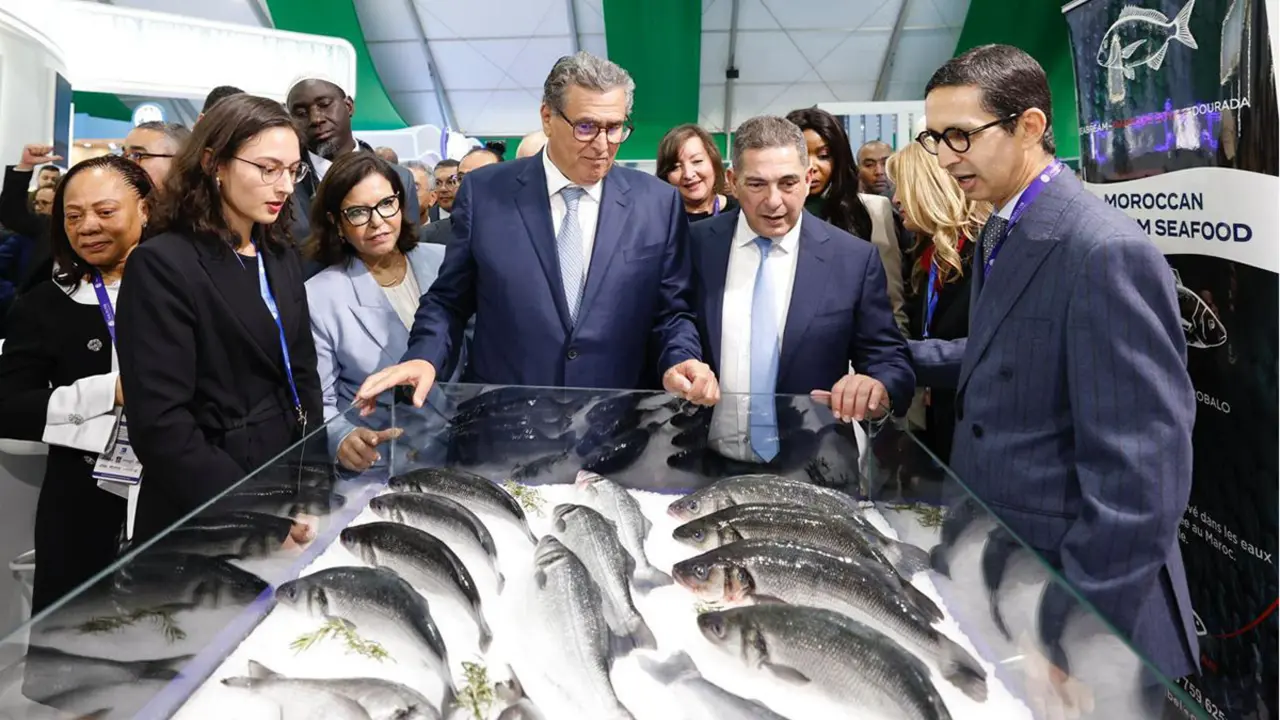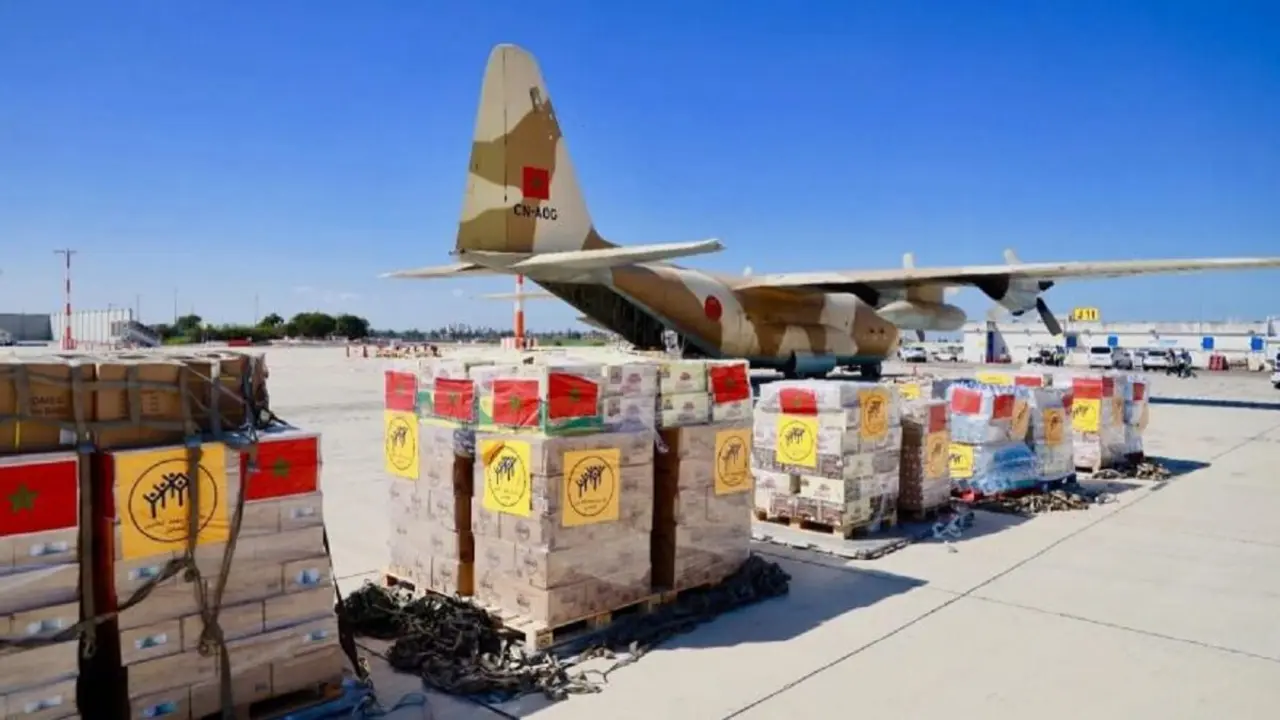United Nations, 75 years: the case of the borrowed tie

"When my mother visited the United Nations building she found out she was pregnant with me; I think that's why I've been travelling so much. The United Nations was a totem as a building, with its thirty-nine floors, and an inspiring beacon of internationalization for the whole world. So much so that my friend the American painter Eilleen Ahern had it idealized in this way, and made us laugh with her cosmopolitan witticism in the days when the world was crowded together again in New York in the eighties.
In my years as a correspondent in the Big Apple, for more than a decade, the United Nations, the UN, had a prominent place as an information centre and as a global lightning rod. Security Council meetings, particularly on Middle East affairs, Russian-American tensions during the long Cold War and cases of decolonisation (including Gibraltar and the Sahara) and the solemn General Assemblies attended by the world's leading leaders-from Reagan to Gorbachev, Fidel Castro and Pope John Paul II-gave us a sure-fire way of telling the story.
Born to enshrine the new world order born of the outcome of the Second World War, its haughty appearance on the eastern slopes of Manhattan, by the East River, gave the organisation a halo of power, although it was more of an observatory of the international pulse. It was like a crusher, or perhaps a crisis steamroller. The conflict that entered there diminished in intensity or flared up, although it was difficult to consider it resolved or concluded. For some the paradigm of diplomacy, for others the tunnel of lost time... In any case, it was still a privileged observatory in the changing eighties.
Radio Televisión Española placed its correspondent within a stone's throw of the building that housed the world organisation. On the corner of Second Avenue and 42nd Street, Jesus Hermida and Cirilo Rodriguez, the first correspondents of the house, moved in. And we stayed there for a while - before moving to Madison Avenue - Pedro Erquicia and myself, his successors in television and radio from New York. The UPI agency and the headquarters of the Daily News were also very close by, where the first film of the new Superman saga was shot in the eighties with Christopher Reeve and the stellar appearance of Marlon Brandon in the cast as an all-powerful father figure on the planet Krypton.
You walked through Tudor City (Rockefeller-owned apartment buildings, as well as the land where the international organization's headquarters were located), and up some steps you immediately reached First Avenue, right in front of the General Secretary's building. It was like an urban balcony, a perfect place to make the entrances or presentations for the news. Even if the distance was short, the schedules for getting into the radio bulletins or editing for television forced some races that left you breathless. Other colleagues had tables - not offices - inside the building.
Only the agencies, like the Spanish Efe, had their own space with a window. Our sentry in the eighties was Julián Martínez, a man with a perennial smile, always affable and cooperative. Sooner or later Miguel Larraya and Silvia Odoriz, and many others, passed through there... including José Sobrino, who ended up working in the office of the spokesman for the Secretary General. As did the Peruvian Mario Zamorano, whom I met again in Paris working at UNESCO. The most veteran correspondents were Gustavo Valverde, first from Ya, then from Tiempo, and José María Carrascal from ABC. In addition to Julio Camarero who, after leaving Pueblo, sent his chronicles to the SER.
In the 1970s and 1980s the UN was still very newsworthy. Afterwards it only remains so when someone - above all American presidents - vilifies it or leaves it without funds. The legendary Spanish representative was Jaime de Pinies, with his ineffable moustache, sly talk and exact and thorough knowledge of the organisation's clockwork mechanisms. He was a star during the Franco regime and also afterwards, first in the sessions on the question of Gibraltar and then in the democratisation of the Spanish regime. "I'm going for my sixth cocktail, the diplomat's life is so hard", his little joke hid many truths despite the initial air of frivolity. The UN was a fundamental base for making contacts, for settling misunderstandings, for playing the impossible when the Cold War did not allow open meetings.
And it also served, of course, as a great official cover for spying in the streets of New York and in the depths of the first world power. The Russians, the Cubans and many others knew very well what they were doing. So as not to be promised too much happiness, the American authorities sometimes restricted their movements to a few miles from the centre of Manhattan, far from military installations or logistic centres of interest.
Jaime de Pinies was already popular in the days of black and white television with his appearances in defence of the sovereignty over Gibraltar in the midst of Franco's regime. He was stationed in various posts in New York from 68 to 72. And again from 73 to 85. Charming, no doubt, but also sharp and sometimes haughty, his ability as a diplomat was undeniable. He reigned in the Spanish colony from the state-owned town house near the Metropolitan Museum where dinners and receptions took on an imperial dimension. The building has a Hitchcockian-style staircase leading up from the entrance hall to the lounge and dining room on the first floor. I visited it again, with the memories hanging over my head, on the occasion of a visit in which the minister Moratinos had a birthday and the current ambassador organised a dinner with a relaxed atmosphere but full of references to the world situation among the diners from different countries, tasting the food on historic dishes with the Spanish coat of arms engraved on the ceramics.

Pinies also had something to do with one of the most notorious incidents in the history of the United Nations: Kruchev's shoeing. The facts relate it to the Soviet leader's anger following the pro-American, pro-government speech of a Philippine ambassador. The vehement Nikita Kruchev first pounded his fists on the dais and then repeated himself in the protest shoe in hand. His granddaughter Nina Khrushchova recounted in 2000 that her grandfather was unveiling shoes that day, and had taken them off to relax. When he punched her against the table, she dropped her watch and when she picked it up off the floor she found the shoe and used it as a noisy weapon.
But the version in the Soviet leader's memoir puts the shoe in relation to Spain. Having made a series of accusations against the Franco regime, the Spanish ambassador, Jaime de Pinies, requested the right of reply, which was also replied to after the speech by a boo from the socialist countries of the East. Then, he wrote in his memoirs, perhaps upsetting history, that "remembering reports I had read about the sessions of the Russian Duma, I decided to add a little more heat. So I took off my shoe and hit it on the desk, so that the protest would be even greater".
Competing in theatricality, on that same stage with a wooden backdrop and a marble lectern with green and white veins, was Fidel Castro. He set it up in style in his first speech to the Assembly in 1960. He returned in 1979, in my first year as a correspondent, and took the stage in his olive green commander's uniform and with the same grandiloquent tone to denounce hunger and injustice. "If there are hungry people in the world, what is the United Nations for? He returned in 1995 and 2000 because despite the American blockade, crises such as the missile crisis and allegations of spy infiltration in both countries, access to New York thanks to the UN was guaranteed to everyone, friends or enemies of the United States.
Fidel had spent his honeymoon from his marriage to Mirta Díaz Balart at 155 West 82nd Street in Manhattan and everyone recounts that he felt a weakness for the Big Apple. He brought colour and colour to the General Assemblies, and successive Cuban ambassadors were always the finest and sharpest in the Security Council sessions. Both they and the Russians, or at one time the Iranians, were closely watched as they moved around the Big Apple. Although it was international territory, fear of their espionage work placed them on the list of those in the American secret services. As was confirmed years later, the Cubans were infiltrated by the American spy apparatus that tried to spy on them. They spun very thinly.

Cases of espionage date back to the very beginning of the UN's role on New York territory. There were already suspicions in the "Galindez case" about the member of the Basque Nationalist Party who disappeared in the city and who was novelised by Manuel Vázquez Montalbán and made into a film by Gerardo Herrero. But the greatest connoisseur of the rocambolesque episode of Ángel Galindez and the PNV's connection in exile with the US Administration at the time was the old professor of white and populated eyebrows Mario de Salegui. With his American wife, he lived in a flat near Columbia University, and he liked to revel in this and other adventures of exile in the gatherings we held, many in the company of the Catalan singer Xabier Ribalta. His powerful physical presence and enigmatic face led me to offer him a role in a short film I shot in the early 1980s in various locations in Manhattan, entitled "Improvisers of Illusions". I owe the title to Cioran, who calls the Spaniards by that name in one of the chapters of his work 'The Temptation to Exist'.
You had to get a ticket, which they always gave you as a press if there was any space left, to attend the Security Council meetings, which are usually public. Also for the Assembly that I followed from the radio and television fish tanks, similar to those that the interpreters of the co-official languages had. There, Eduardo Mendoza, who earned his salary in his New York years and then wrote stories that were sometimes hilarious, remained alert and with his impenetrable face. A perfect example of what lay beneath the straight lines of the great building in Tortuga Bay, which Niemeyer and Le Courboisser designed with great tension.
The 32nd project of the Brazilian and the 23rd of the French, which their assistants married until they reached the current arrangement of the high building of the General Secretariat, and the belly of the Assembly, with that of the Council in between, and an auditorium on the right. There were performances and concerts there, as memorable as that of Alicia de la Rocha or very especially those of our beloved Catalan troubadour Xavier Ribalta, with whom we shared music, laughter, and old stories of conspiracy.

Years later, in 2005, the Assembly stages, and the fish tanks for interpreters, plus other corners of the great building, were very wisely used in the Sydney Pollack film starring Nicole Kidman and Sean Penn, entitled precisely The Interpreter, which is the role of Kidman's character in the film. I finally met the scriptwriter who had the idea for this story, Martin Stellman, and invited him to be a judge at the Seville Film Festival during the years I directed it. The film has been a great success, especially on the television circuit, because there is not a year when it is not shown on a channel. Martin told me that he never stops watching it, although his wife from Cádiz never tires of watching it. Without a doubt, it is a complex and well-spun story that perfectly portrays all the details of access to the United Nations building, from the air and from inside.
The film that had best exploited the complex of buildings projected by Le Courbusier and Niemeyer up to that date was Death on the Heels, in the original North by Nortwest (1955) by Alfred Hitchcock, written by the renowned New York scriptwriter Ernest Lehman, a great success in Hollywood. The film had its world premiere at the San Sebastian Film Festival. And it was not the only Spanish ingredient in this film with a UN spy background. Part of the complex story is based on the Second World War operation Mincemeat. The body of a poor Welshman is found drowned on the beaches of Huelva and is mistaken for that of a British general. The key is a few documents relating to the fact that the Allies did not intend to attack Sicily. It was a trick to get the material returned by Franco's authorities to Nazi Germany and to deceive the enemy. It was against this background and with the desire to stage an assassination at the UN that the script was put together.
To discuss fiction films and reality, the parallel office of the Spanish journalists and assimilated friends was a few streets south of 42nd Street, in the Trattoria Frank, which was actually run by a Galician. He specialised in bringing in lobsters from Maine, which were as big as they were not very tasty, but they calmed down the gluttony for a comfortable price. Rafael Albertí and his colourful companions from the early eighties would also pass through this place on a famous night, on the first trip to America of the communist poet, who was already able to skip that customs form in which he wondered if you were a communist like in the best years of McCarthyism. I remember at the table Julián Martínez, Ribalta, the producer Juan Lebrón and some others.
Rafael displayed his charms in the morning in a large room at NYU University, reciting his harmonic and funny poems from memory. At night he couldn't stand much. He said hello, painted his repeated doves on the tablecloth, and let us notice the locusts, while he indulged in a light sleep. There was his racket when it came to paying, although Frank's bills were never very high. But the companion thought that leaving that tip of the pigeons on the paper tablecloth was more than a payment... I don't know if Frank ever framed them or if they finally saved him from the rise in rents, which seems to have forced him to return to his beloved Galicia.
He also got a visa, at the time of the American opening, from a leader of the Spanish Young Communists, the protagonist of another nice culinary anecdote. The dinner he attended was in a Chinese man, who knows if it was because of ideological affinity. At dessert, the diners began to tell each other aloud about the phrase in their "fortune biscuit" that always decorated the end of the meal in those establishments. The young communist, who had not travelled much, could not count his, because he had swallowed it whole, without looking.
Despite the old ban on entry for those who declared themselves communists on the immigration form that they had to fill in on the planes and hand in at customs, the truth is that there was a nominally active Communist Party in the country whose leader ran for president every four years, and he had been doing so for some time without much fortune. The now legendary, long-serving secretary general of the American Communists was named Gus Hall. He had a small office on 23rd Street, almost in front of the Chelsea Hotel and the El Quijote restaurant (which are also included in the film The Interpreter). He agreed to be interviewed and his background was such that he did not know much about Spain beyond the Civil War, a mythical episode in history especially for the members of the Lincoln Brigade, whose archives he guarded a few streets below in Greenwich Village, the New York University.
It was quite an event for us that the United Nations of the world finally elected a Spanish-speaking man with a Segovian name as Secretary General. Javier Pérez de Cuéllar, who inscribed his name in 1982 after Kurt Walheim, the Austrian hieratic who hid a Nazi past in his skin. Longevous, who died this year on his hundredth birthday, Pérez de Cuellar was affable, cordial, calm, but undoubtedly persistent, tenacious and the author of a calm but resolute diplomacy. When Rosa Montero came to the city to interview him, I recall that she titled her interview for El País Semana "the drop from the 39th floor", like the Malaysian drop that never ceases until it achieves its purpose.
Spanish journalists had access to the institution as never before, both in groups and individually. I keep a dear photo with Pérez de Cuellar as Spain's national radio correspondent and sitting at the table with my colleagues Gustavo Valverde from, José María Carrascal, Ramón Vilaró from El País, Julio Camarero from SER, Luis Foix from La Vanguardia, Rafael Ramos and José Sobrino from Efe and Mario Zamorano, their spokesman. All well tied up as required by the Organisation.
To access the delegates' dining room - a tremendously large room, with large windows opening onto the East River - a tie was compulsory. If the day was embarrassing, as it is in the New York summer, and you had to leave without the hateful garment around your neck, no problem. They kindly lent it to you in the wardrobe at the entrance. Something similar was happening in the sophisticated restaurant in the late Twin Towers in southern Manhattan, Windows of the World, with its spectacular views of Brooklyn. Cowboys were forbidden there, and I remember a friend who, when she was reprimanded by the doorman at the base of the building, resorted to rolling up her jeans over the size of her mackintosh and spending the whole dinner with her garment on, but at last without getting bitter on the night that she lost her dinner because of the label.

The Spanish diplomat Chencho Arias will have many good memories of the United Nations, which he experienced as head of the mission and often as director of the OID, the Diplomatic Information Office, with ministers of all kinds. With his open, friendly and direct character, he managed to get even some of the language-spoken or ill-prepared ministers to exchange an improvised statement for journalists without any fuss. The battle from time to time was to get Spain into the Council. This enabled it to play a leading role in the international concert and also to show off in statements to the Spanish press.
On a trip by Felipe González, his address to the General Assembly coincided with a hurricane alert for New York. I remember putting tape on the windows of my flat because after years of bonanza this wind was promising strong. We endured the pull and waited for the presidential address, confident that his planned visit to Washington, further south, on the trail of the tropical storm, would be suspended. Otherwise. The wisest thing seemed to be to go by Amtrak, by train on a journey lasting just over two hours. But in the end, the decision was that the important thing was the meeting with Reagan, which could not be suspended and that the trip would be made... on the presidential plane with which González had travelled from Madrid. Recklessness.
The storm, the hurricane, caught us in the act. The flight was a continuous sway. Chencho, who was "shepherding" the press through the corridors of the aircraft, suddenly took a triple somersault and appeared five rows away for defying the difficult gravity. We arrived without much bruising at a torrential Washington, with branches fallen by the fury of the storm, but ready to follow the coverage and meet the next morning at the gates of the White Handle that had taken on an imperial air with Ronald Reagan in the Oval Office. I don't know if in this one, but in a state visit with all the honors, it was the "United Nations interpreter" Eduardo Mendoza who would play and translate live for Reagan and Gonzalez. It is impossible to find someone with better qualities. I also remember Eduardo as being well equipped to do some dance pirouettes in the good parts that we enjoyed in New York at the time.

In addition to the compulsory events, the speeches in the Assembly and the votes in the Council, the surroundings of the United Nations also served to provide news coverage for the various demonstrators. For Palestinians, anti-nuclears, Cubans in exile, pro-Palestinians, environmentalists... the fences of the New York police were put up and taken down at the mercy of the calls. There, I was able to see and interview a Pete Seeger who was already an octogenarian and was still protesting in the company of the native Indians. For New Yorkers it was a nuisance that was included in the price of living in the world's capital.
The traffic especially in the Midtown, in the middle of the Manhattan grid was jammed with the numerous limousines, the follow cars with bodyguards and additional police... It became mission impossible to book a hotel room in mid-September with all the world's diplomacy, leaders included, occupying New York. The external hullabaloo became an air of pacifism inside the building. Entrance through the revolving doors, up the escalator and there the master of ceremonies would welcome the leaders. The soft carpets of the great building of "First and Forty-two" cushioned the misgivings and the world seemed peaceful, at least for a while.
In the mid-1980s, the battle for Central America was raging. After the fall of Somoza in Nicaragua, both El Salvador and Honduras were a powder keg. The United States activated the so-called La Contra to harass nationalist or pro-communist regimes. On a trip around the area with Ronald Reagan, a group of journalists left the tour in San Pedro Sula (Honduras) where Reagan met, among others, the Guatemalan president and recognised genocide perpetrator, General Ríos Montt and the rest of his colleagues. We drove down to Tegucigalpa, where we unexpectedly shared a hotel with the American pilots who were supposedly acting in secret as Contra collaborators, and even met the Israeli defence minister Ariel Sharon as he was being escorted into the lift.
The echoes of the conflict in New York were constant at that time, with visits from both the official leaders of the countries and those of the illegal parties fighting against them. Thanks to the United Nations, they went up to the city of skyscrapers and provided us with a great deal of information. And some cases outside the UN, such as the meetings organised by journalists who had repeatedly covered the area, like the correspondent of the Italian L'Unita, Lucia Annunziata who lent the living room of her small flat in the Village to facilitate the meetings with the international press accredited in the city. Years later, Lucia became president of the RAI, although for a short time due to political disagreements.

In 1985, a fireproof Jaime de Pinies managed to crown his long journey in New York with the presidency of the General Assembly at the 40th session. A double celebration for the veteran diplomat who has just married Julia Ghirardi, a widow of Italian-Mexican origin. A sweet moment in his career, surrounded by the most important world leaders of the time who attended the session, and far from the manoeuvres he had to make during and after Franco's regime on the burning issues for Spain at the UN.
Gibraltar and the Sahara, defending decolonisation and the right to self-determination for the Saharawis after Spain's hasty departure or abandonment of the territory. Curiously, Fernando Morán, the Socialist prime minister of foreign affairs following the arrival of democracy, was to replace him as head of the Spanish mission to the United Nations. I witnessed a few years before Moran's semi-secret trip to meet with senior officials of the State Department in Washington before the Socialists came to power in Spain. It must have been a mutual inquiry, which Moran discreetly told some Spanish journalists at the Spanish Consulate in New York, thanks to the offices of the then Consul Dicenta.

Next to the building that houses the UN, perhaps the widest skyscraper in Manhattan, there were some smoking chimneys, a sign of the energy combustion produced by the driving system that produces the famous fumaroles that escape from the New York asphalt. Both are clear ways of identifying the city. One cannot imagine a New York without its cinematic fumes, and without the United Nations and its international brand. It is also true that both systems - the heat system and that of multilateral diplomacy - now appear to be decadent and almost in disuse. I see them in full swing and I confess that I identify with them so much that I do not believe that the mute future of New York and of cosmopolitanism can survive without both.
With the pandemic, New York was spared the uncomfortable traffic jams caused by the caravans of world leaders during the General Assembly session in September. Looking forward to the organisation's 75th anniversary, it was finally tarnished. There was no longer any question of who would or would not attend; everyone stayed at home. The multi-screen world was also installed in the UN dialogue format. Now, cross insults, rather than conciliatory words, shot up from Trump's plasma to Chinese leader Xi Jinping. The new world order was in full view. The advance of Chinese influence, both economic and diplomatic, was unstoppable. The questioning of America's method with President Trump, too. In view of this new multipolar situation, will the world dress up in the UN tie or will it resort again to combat gear?









